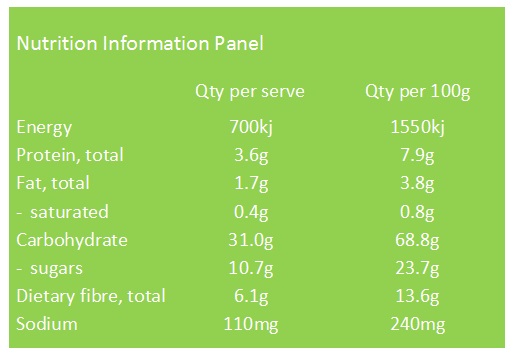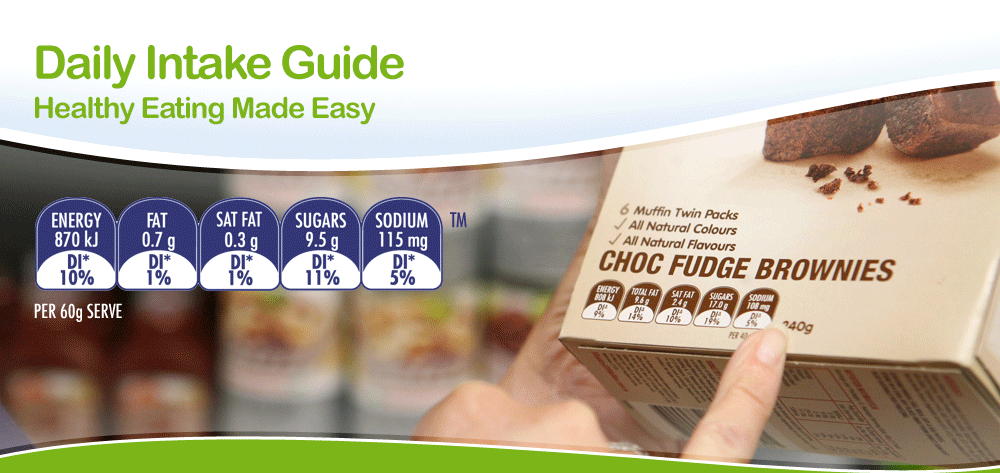How is food energy calculated?
You may be familiar with the Nutrition Information Panel that appears on almost all packaged food in Australia.
Example:

How do they come up with the Energy figure in the Nutrition Information Panel (above)?
They took the amount per serve of protein, fat, carbohydrate and dietary fibre and multiplied each by the energy provided by each of these nutrients (see side panel to right). Last step, add each of these figures to get the total energy in the serving.
Therefore, the total energy of one serving of the food is calculated by adding together the energy provided by the protein, total fat, carbohydrate and dietary fibre.
See below:

*These values are sourced from the Food Standards Code, Standard 1.2.8.


